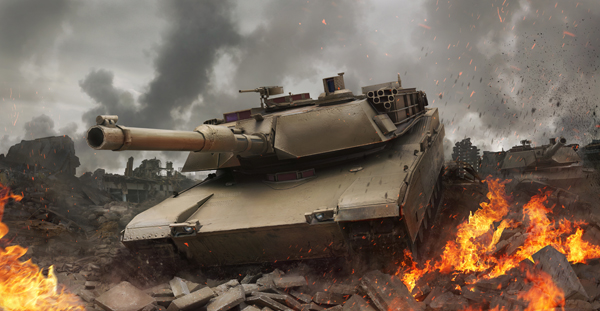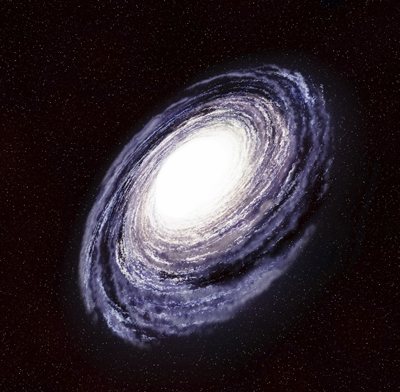
|
An article in the Wall Street Journal (behind a paywall, unfortunately) last week at the start of the Russian invasion of Ukraine noted the number of U.S. and European companies with stakes in or economic ties to Russian companies and suppliers, and how the war was making them scramble. And, of course, most of Europe depends on Russian natural gas that flows in pipelines running through Ukraine—or might have flowed through the Nord Stream 2, except that Germany on the eve of the invasion declined to certify that new pipeline.
My point is that the world is a lot more connected place these days—economically, financially, informationally, and in every other relational dimension I can think of—than it was the last time we had anything like a world war. And whatever you can say about the ties between Europe and Russia goes maybe double or triple about economic ties between the U.S. and China, and exponentially deeper and wider for any political disagreement among the various U.S. states themselves.
War just isn’t practical—maybe not even feasible—between two major powers anymore. Sure, we can have “brushfire wars” in places like Afghanistan or Iraq or Syria, certain parts of Asia and Africa, or South America. Those are, frankly, places of former colonial dependency that may still supply oil or some cash crop to world trade but are not vital trade centers themselves. I’m not saying these places don’t matter but, let’s be honest, they can have a meltdown and engage in a civil war, with one or more superpowers backing and rooting for one side or the other, without inconveniencing anyone outside their borders.
But let a place like Russia start a war that interrupts the flow of energy, and people take notice. Let a place like China fall down on its trade agreements with the rest of Asia and the world for some political reason—or attack the semiconductor foundries of Taiwan—and a lot of people lose their jobs in those other parts of the world. Many Chinese also go out of work and maybe even starve.
And let’s talk about the gorilla in the room, political unrest leading to blows in the U.S. Not just summer riots, gunfire, and “revolution” in places like Minneapolis, Seattle, and Portland, but formal, legal, legislative votes to consider separation and partition. Then you’re talking actual civil war, like the unpleasant affair from 1861 to 1865, with self-proclaimed governments, opposing armies, invasions, battles, shifting personal allegiances, civilian deaths, and so on, horribly.1
Or, instead of a state-against-state conflict, the political tensions that now exist might erupt like the Spanish Civil War: neighborhood against neighborhood, urban versus rural communities, or clublike affiliations fighting each other, like the supporters of different soccer teams battling in the streets, except with guns and improvised explosive devices.
That sort of strife might almost be possible—if, unlike the recent urban riots and “revolutions,” a true opposition to the independent rioters were to emerge and engage them on equal footing. Not just a handful of opportunists ready to wage battle for the fun of it, but a real and devoted uprising with plan of attack and defense. But such a scenario would only be possible if the state or federal government stayed out of it, watched, wrung its hands, and pretended nothing real was happening—like the federal government and the states of Minnesota, Washington, and Oregon during the recent urban unpleasantness.
That sort of war without the supervision of competent adults can go on for years. See again Afghanistan, Iraq, Syria, or certain parts of the rest of the world. But a declared and actively pursued war between coalitions of U.S. states on the model of the first Civil War? No, not now, and not in the future.
And why do I believe this? Because, like the other major, developed countries in the world—those that join and run the Organisation for Economic Co-operation and Development (OECD), the International Monetary Fund, the World Trade Organization, the United Nations Security Council, and other organized bodies—the various states in this country are too interconnected to ever go to war with each other.
Since the 1860s, we have built networks of information, banking, interstate commerce and communications, webs of electrical transmission, oil and gas pipelines, highways, corporate ownership and franchises across the nation, and other links that cannot be easily severed. We bank with companies headquartered thousands of miles away in other states and trade stocks and bonds at exchanges in New York and around the world. Try to break up a national bank like Wells Fargo or Bank of America or arrange communications so that it can trade across quasi-national boundaries between warring states—that’s a whole lot of disruption, negotiation, and work. Try to maintain cell phone and internet services across such lines. Try to operate something as complicated as a gas pipeline, with rights of way and pumping stations to maintain pressures and temperatures, across a hostile, quasi-national border. Sure, all of this can take place internationally when there are trade agreements, treaties, and good will among partners. But once a war shuts the border and armies start marching? Once bombs are falling and people are routed from their homes? Oh, no!
About the only thing that crossed the borders between North and South in the years before the first Civil War were railroads. And most of them were small, entrepreneurial affairs that linked one part of a state with another, one town with the next. Organized interstate commerce, railroads and telegraph lines covering whole regions and extending out to the West Coast, didn’t really get under way until after that war was ended.
Consider communications. The Nazis in Germany and the Soviets in Russia could maintain their dominance exclusively through propaganda. Their governments controlled or owned the newspapers and radio stations. Germans in the 1930s could buy only radios with limited range, so they could not receive broadcasts from outside the country. Russia had two newspapers, Pravda and Izvestia. In either country, any independent form of mass communication—even printing and handing out leaflets—was treated as a crime. Today, the internet passes information like candy. Anyone with a computer or cell phone has access to multiple news sources and reference libraries. The national media can bewail “misinformation,” but they no longer have an exclusive voice. The Chinese can try to censor the internet at their borders, but who knows how effective that tactic really is? Technology has changed the nature of information, for good or ill.
Consider food distribution. Today, we eat fruits, vegetables, and meat grown on other continents. We eat fruits and nuts from California, beef from Texas, and chicken from all over, sent across the nation by rail and truck under refrigeration. We eat seafood caught in the Gulf or the Atlantic and Pacific oceans and sent inland while still fresh. Our processed foods, like canned goods, breakfast cereals, potato chips, and even packaged breads, come from plants that may be a thousand miles away across state lines. You close those borders in a war, and all of that food diversity disappears. Then you really have to depend on “locally grown” and “artisanal” fare from communal gardens—and may whatever spirit you pray to help you then!
War these days is a lot more complicated. We all have good reason to join hands across country borders and state lines, to live and work under global and national agreements. The alternative is not just unpleasantness but more likely issues of life and death.
1. This scenario presumes a strong president in the former national government who will fight to maintain the union and not simply let the seceding states go their own way. Lincoln fought in 1861. Stephen Douglas probably would have waved goodbye.
